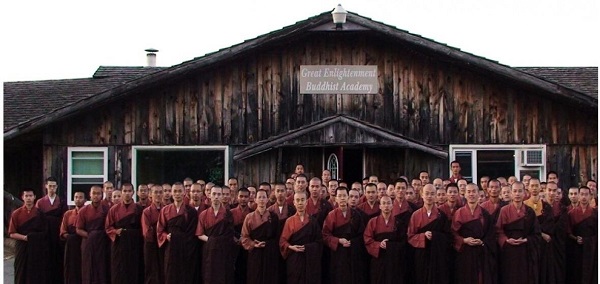Uncategorized
Stan Lee, creator of a galaxy of Marvel superheroes, dies

LOS ANGELES — Stan Lee, the creative dynamo who revolutionized the comic book and helped make billions for Hollywood by introducing human frailties in Marvel superheroes such as Spider-Man, the Fantastic Four and the Incredible Hulk, died Monday. He was 95.
Lee was declared dead at Cedars-Sinai Medical Center in Los Angeles, according to Kirk Schenck, an attorney for Lee’s daughter, J.C. Lee.
As the top writer at Marvel Comics and later as its publisher, Lee was widely considered the architect of the contemporary comic book. He revived the industry in the 1960s by offering the costumes and action craved by younger readers while insisting on sophisticated plots, college-level dialogue, satire, science fiction, even philosophy.
Millions responded to the unlikely mix of realistic fantasy, and many of his characters, including Spider-Man, the Hulk and X-Men went on to become stars of blockbuster films. He won the National Medal of Arts in 2008.
Recent projects Lee helped make possible range from the films “Avengers: Infinity War,” ”Black Panther” and “Guardians of the Galaxy” to such TV series as “Agents of S.H.I.E.L.D” and “Daredevil.” Lee was recognizable to his fans, having had cameos in many Marvel films and TV projects, often delivering his trademark motto, “Excelsior!”
“Captain America” actor Chris Evans mourned the loss on Twitter: “There will never be another Stan Lee. For decades he provided both young and old with adventure, escape, comfort, confidence, inspiration, strength, friendship and joy. He exuded love and kindness and will leave an indelible mark on so, so, so many lives. Excelsior!!”
Lee considered the comic-book medium an art form and he was prolific: By some accounts, he came up with a new comic book every day for 10 years. “I wrote so many I don’t even know. I wrote either hundreds or thousands of them,” he told The Associated Press in 2006.
He hit his stride in the 1960s when he brought the Fantastic Four, the Hulk, Spider-Man, Iron Man and numerous others to life. “It was like there was something in the air. I couldn’t do anything wrong,” he said.
His heroes, meanwhile, were a far cry from virtuous do-gooders such as rival DC Comics’ Superman.
The Fantastic Four fought with each other. Spider-Man was goaded into superhero work by his alter ego, Peter Parker, who suffered from unrequited crushes, money problems and dandruff. The Silver Surfer, an alien doomed to wander Earth’s atmosphere, waxed about the woeful nature of man. The Hulk was marked by self-loathing. Daredevil was blind and Iron Man had a weak heart.
“The beauty of Stan Lee’s characters is that they were characters first and superheroes next,” Jeff Kline, executive producer of the “Men in Black” animated television series, told The Blade of Toledo, Ohio, in 1998.
Some of Lee’s creations became symbols of social change — the inner turmoil of Spider-Man represented ’60s America, for example, while The Black Panther and The Savage She-Hulk mirrored the travails of minorities and women.
“I think of them as fairy tales for grown-ups,” he told The AP in 2006. “We all grew up with giants and ogres and witches. Well, you get a little bit older and you’re too old to read fairy tales. But I don’t think you ever outgrow your love for those kind of things, things that are bigger than life and magical and very imaginative.”
Lee scripted most of Marvel’s superhero comics himself during the ’60s, including the Avengers and the X-Men, two of the most enduring. In 1972, he became Marvel’s publisher and editorial director; four years later, 72 million copies of Spider-Man were sold.
“He’s become our Mickey Mouse,” he once said of the masked, web-crawling crusader.
Lee also published several books, including “The Superhero Women” in 1977 and “How to Draw Comics the Marvel Way” the following year, when he was named publisher of the year by the Periodical and Book Association of America.
CBS turned the Hulk into a successful TV series, with Bill Bixby and Lou Ferrigno portraying the doomed scientist from 1978-82. A Spider-Man series ran briefly in 1978. Both characters were featured in animated TV series as well.
The first big-budget movie based on Lee’s characters, “X-Men,” was a smash in 2000, earning more than $130 million at North American
“Black Panther” actor Winston Duke took to Twitter to pay his respects to Lee: “You gave us characters that continue to stand the test of time and evolve with our consciousness. You taught us that there are no limits to our future as long as we have access to our imagination. Rest in power!”
Stanley Martin Lieber was born Dec. 28, 1922, in New York. He grew up a fan of “Hardy Boys” adventure books and Errol Flynn movies, and got a job at Timely Comics after graduating from high school.
Within a few months, the editor and art director quit, leaving the 17-year-old Lee with creative control over the company, which grew and was renamed Atlas Comics and, finally, Marvel. Lieber changed his name, thinking Lee would be used for “silly little comics” and his real name would be reserved for novels.
His early work largely reflected popular movies — westerns, crime dramas, romance, whatever was the rage at the time. He worked for about 50 cents per page.
After a stint in the Army during World War II, writing for training films, he was back at Marvel to begin a long and admittedly boring run of assembly line comic book production.
Comics in the 1950s were the subject of Senate hearings pushed by the Comics Code Authority, which frowned on gore and characters that questioned authority. Major comic book companies adopted the code as a form of self-regulation to avoid sanctions.
Lee said he was also working for a publisher who considered comics as fare only for children.
“One day I said, ‘This is insane,'” Lee told the Guardian in 1979. “I’m just doing the same type of stories as everybody else. I wasn’t taking pride in my work and I wanted to quit. But my wife said, ‘Look, why don’t you do the kind of comics you want for a change?'”
The result was the first issue of “The Fantastic Four,” in 1960, with the characters, plot and text from Lee and the illustrations by famed Marvel artist Jack Kirby.
The characters were normal people changed into reluctant superheroes through no fault of their own.
Writing in “Origins of Marvel Comics,” Lee described the quartet this way: “The characters would be the kind of characters I could personally relate to; they’d be flesh and blood, they’d have their faults and foibles, they’d be fallible and feisty and — most important of all — inside their colorful, costumed booties they’d still have feet of clay.”
“The Amazing Spider-Man” followed in 1962 and before long, Marvel Comics was an industry behemoth.
Lee knew his work was different, proudly noting that stories were drawn out over several issues not to make money but to better develop characters, situations and themes. He didn’t neglect his villains, either. One, the Moleman, went bad when he was ostracized because of his appearance, Lee wrote, adding it was “almost unheard of in a comic book” to explain why a character was what he was.
Lee’s direct influence faded in the 1970s as he gave up some of his editorial duties at Marvel. But with his trademark white
Lee moved to Los Angeles in 1981 to head Marvel Productions, an animation studio that was later purchased, along with Marvel Comics, for $50 million by New World Entertainment.
As sales of comics declined, Marvel was forced into bankruptcy proceedings that meant it had to void a lifetime contract prohibiting Lee from working for anyone else. Lee later sued Marvel for $10 million, saying the company cheated him out of millions in profits from movies based on his characters.
In 2000, Lee agreed to write stories for DC Comics, reinventing Superman, Batman, Wonder Woman and other signature characters for Marvel’s one-time rival. DC
“With his artistic collaborators at Marvel, Stan co-created the richest imaginary universe a single comics writer has ever built,” he said.
The dapper, friendly comic book genius continued to work into his 90s on numerous projects, including comics, films and DVDs.
In the late 1990s, he looked to capitalize on the Internet craze, offering animated “Webisodes” of comic-like action. Stan Lee Media also sought to reach out to Web-savvy youth through deals with pop artists the Backstreet Boys and Mary J. Blige.
The company went bankrupt, and three men were indicted for allegedly defrauding the business in a check kiting scam. Lee wasn’t implicated.
After that initial failure, Lee formed the successful Pow! Entertainment company to launch animated Internet-based projects.
Lee’s wife and partner in nearly everything, Joan Lee, died on July 6, 2017, leaving a void that made her husband, by then in mental and physical decline, vulnerable to hangers-on who began to surround him. Lawsuits, court fights and an elder abuse investigation all emerged in the fight over who spoke for the elderly Lee.
Lee is survived by his daughter, Joanie, and a younger brother who also worked in comics, Larry Lieber.
___
Associated Press writer John Rogers contributed to this story
Andrew Dalton And Dave Zelio, The Associated Press
Uncategorized
CNN’s Shock Climate Polling Data Reinforces Trump’s Energy Agenda


From the Daily Caller News Foundation
As the Trump administration and Republican-controlled Congress move aggressively to roll back the climate alarm-driven energy policies of the Biden presidency, proponents of climate change theory have ramped up their scare tactics in hopes of shifting public opinion in their favor.
But CNN’s energetic polling analyst, the irrepressible Harry Enten, says those tactics aren’t working. Indeed, Enten points out the climate alarm messaging which has permeated every nook and cranny of American society for at least 25 years now has failed to move the public opinion needle even a smidgen since 2000.
Appearing on the cable channel’s “CNN News Central” program with host John Berman Thursday, Enten cited polling data showing that just 40% of U.S. citizens are “afraid” of climate change. That is the same percentage who gave a similar answer in 2000.
Dear Readers:
As a nonprofit, we are dependent on the generosity of our readers.
Please consider making a small donation of any amount here.
Thank you!
Enten’s own report is an example of this fealty. Saying the findings “kind of boggles the mind,” Enten emphasized the fact that, despite all the media hysteria that takes place in the wake of any weather disaster or wildfire, an even lower percentage of Americans are concerned such events might impact them personally.
“In 2006, it was 38%,” Enten says of the percentage who are even “sometimes worried” about being hit by a natural disaster, and adds, “Look at where we are now in 2025. It’s 32%, 38% to 32%. The number’s actually gone down.”
In terms of all adults who worry that a major disaster might hit their own hometown, Enten notes that just 17% admit to such a concern. Even among Democrats, whose party has been the major proponent of climate alarm theory in the U.S., the percentage is a paltry 27%.
While Enten and Berman both appear to be shocked by these findings, they really aren’t surprising. Enten himself notes that climate concerns have never been a driving issue in electoral politics in his conclusion, when Berman points out, “People might think it’s an issue, but clearly not a driving issue when people go to the polls.”
“That’s exactly right,” Enten says, adding, “They may worry about in the abstract, but when it comes to their own lives, they don’t worry.”
This reality of public opinion is a major reason why President Donald Trump and his key cabinet officials have felt free to mount their aggressive push to end any remaining notion that a government-subsidized ‘energy transition’ from oil, gas, and coal to renewables and electric vehicles is happening in the U.S. It is also a big reason why congressional Republicans included language in the One Big Beautiful Bill Act to phase out subsidies for those alternative energy technologies.
It is key to understand that the administration’s reprioritization of energy and climate policies goes well beyond just rolling back the Biden policies. EPA Administrator Lee Zeldin is working on plans to revoke the 2010 endangerment finding related to greenhouse gases which served as the foundation for most of the Obama climate agenda as well.
If that plan can survive the inevitable court challenges, then Trump’s ambitions will only accelerate. Last year’s elimination of the Chevron Deference by the Supreme Court increases the chances of that happening. Ultimately, by the end of 2028, it will be almost as if the Obama and Biden presidencies never happened.
The reality here is that, with such a low percentage of voters expressing concerns about any of this, Trump and congressional Republicans will pay little or no political price for moving in this direction. Thus, unless the polls change radically, the policy direction will remain the same.
David Blackmon is an energy writer and consultant based in Texas. He spent 40 years in the oil and gas business, where he specialized in public policy and communications.
Uncategorized
Kananaskis G7 meeting the right setting for U.S. and Canada to reassert energy ties


Energy security, resilience and affordability have long been protected by a continentally integrated energy sector.
The G7 summit in Kananaskis, Alberta, offers a key platform to reassert how North American energy cooperation has made the U.S. and Canada stronger, according to a joint statement from The Heritage Foundation, the foremost American conservative think tank, and MEI, a pan-Canadian research and educational policy organization.
“Energy cooperation between Canada, Mexico and the United States is vital for the Western World’s energy security,” says Diana Furchtgott-Roth, director of the Center for Energy, Climate and Environment and the Herbert and Joyce Morgan Fellow at the Heritage Foundation, and one of America’s most prominent energy experts. “Both President Trump and Prime Minister Carney share energy as a key priority for their respective administrations.
She added, “The G7 should embrace energy abundance by cooperating and committing to a rapid expansion of energy infrastructure. Members should commit to streamlined permitting, including a one-stop shop permitting and environmental review process, to unleash the capital investment necessary to make energy abundance a reality.”
North America’s energy industry is continentally integrated, benefitting from a blend of U.S. light crude oil and Mexican and Canadian heavy crude oil that keeps the continent’s refineries running smoothly.
Each day, Canada exports 2.8 million barrels of oil to the United States.
These get refined into gasoline, diesel and other higher value-added products that furnish the U.S. market with reliable and affordable energy, as well as exported to other countries, including some 780,000 barrels per day of finished products that get exported to Canada and 1.08 million barrels per day to Mexico.
A similar situation occurs with natural gas, where Canada ships 8.7 billion cubic feet of natural gas per day to the United States through a continental network of pipelines.
This gets consumed by U.S. households, as well as transformed into liquefied natural gas products, of which the United States exports 11.5 billion cubic feet per day, mostly from ports in Louisiana, Texas and Maryland.
“The abundance and complementarity of Canada and the United States’ energy resources have made both nations more prosperous and more secure in their supply,” says Daniel Dufort, president and CEO of the MEI. “Both countries stand to reduce dependence on Chinese and Russian energy by expanding their pipeline networks – the United States to the East and Canada to the West – to supply their European and Asian allies in an increasingly turbulent world.”
Under this scenario, Europe would buy more high-value light oil from the U.S., whose domestic needs would be back-stopped by lower-priced heavy oil imports from Canada, whereas Asia would consume more LNG from Canada, diminishing China and Russia’s economic and strategic leverage over it.
* * *
The MEI is an independent public policy think tank with offices in Montreal, Ottawa, and Calgary. Through its publications, media appearances, and advisory services to policymakers, the MEI stimulates public policy debate and reforms based on sound economics and entrepreneurship.
As the nation’s largest, most broadly supported conservative research and educational institution, The Heritage Foundation has been leading the American conservative movement since our founding in 1973. The Heritage Foundation reaches more than 10 million members, advocates, and concerned Americans every day with information on critical issues facing America.
-

 Alberta1 day ago
Alberta1 day agoOil Sands are the Costco of world energy – dependable and you know exactly where to find it
-
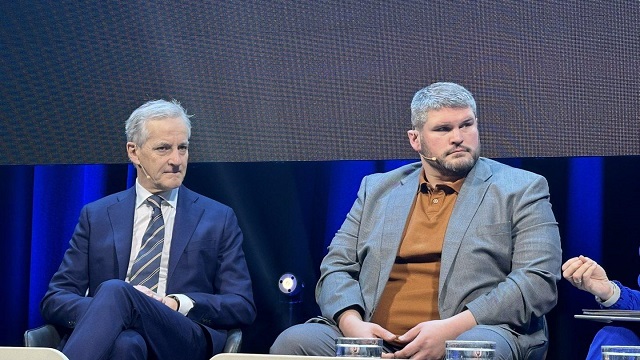
 Energy1 day ago
Energy1 day agoIndigenous Communities Support Pipelines, Why No One Talks About That
-
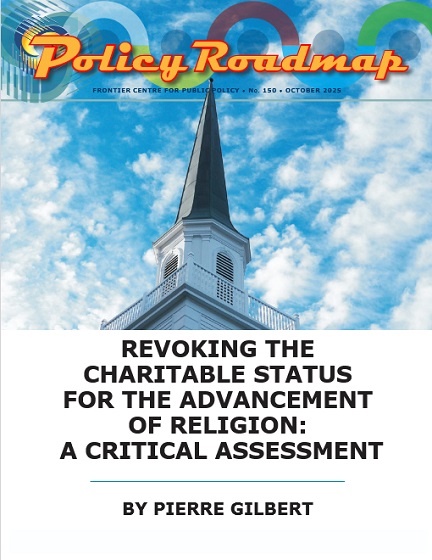
 Business1 day ago
Business1 day agoFinance Committee Recommendation To Revoke Charitable Status For Religion Short Sighted And Destructive
-

 Health1 day ago
Health1 day agoColorado gave over 500 people assisted suicide drugs solely for eating disorders in 2024
-
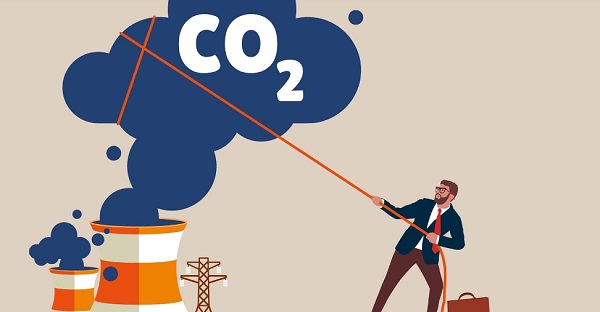
 Alberta23 hours ago
Alberta23 hours agoThe Technical Pitfalls and Political Perils of “Decarbonized” Oil
-
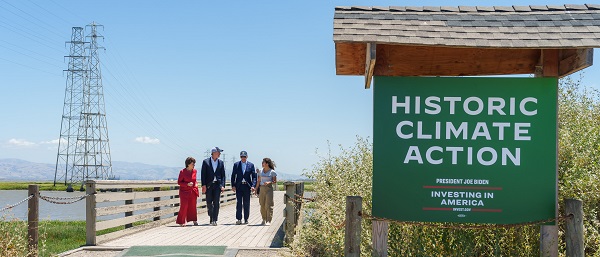
 Daily Caller2 days ago
Daily Caller2 days agoUtah Republican Senator Planning To Attend Big Globalist Climate Shindig Despite Trump’s Energy Policies
-

 Censorship Industrial Complex16 hours ago
Censorship Industrial Complex16 hours agoCanada’s privacy commissioner says he was not consulted on bill to ban dissidents from internet
-

 Business2 days ago
Business2 days agoFinance Titans May Have Found Trojan Horse For ‘Climate Mandates’

